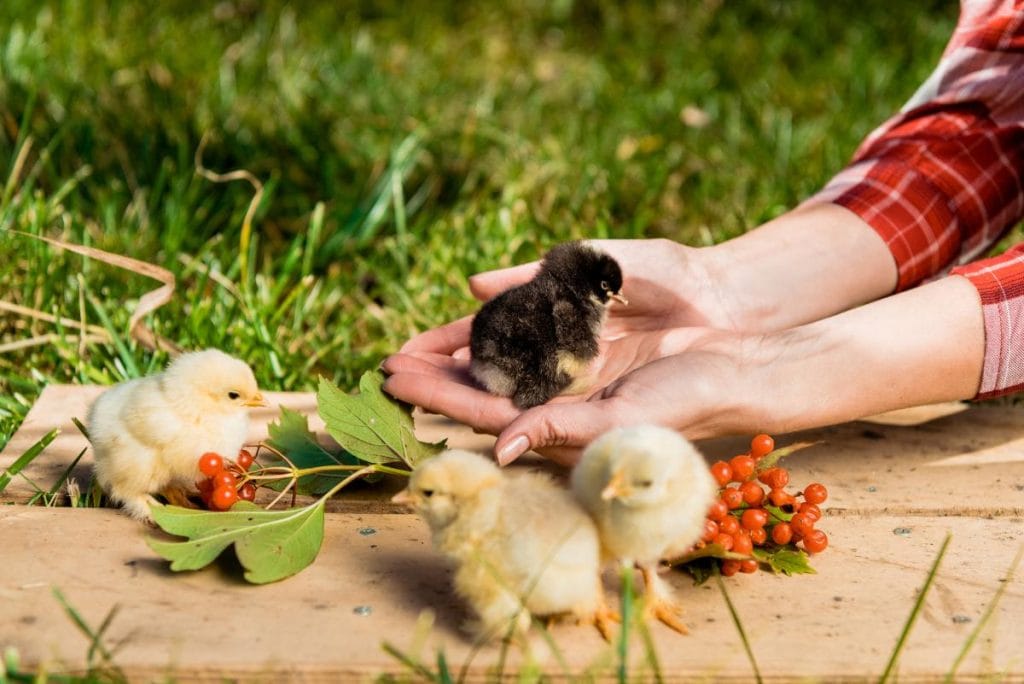Are you thinking about raising chickens? Bringing home your first batch of baby chicks is an exciting adventure, but it requires some preparation. To ensure your new feathered friends get off to a great start, you’ll need to gather a few essential supplies. Let’s walk through the seven must-have items you should have ready before your chicks arrive.

Brooder Box: A Cozy Home for Your Chicks
First things first, your baby chicks need a safe and comfortable place to live. A brooder box serves as their temporary home for the first few weeks of life. You have several options here: a large plastic tub, a sturdy cardboard box, or even a wooden crate. The key is to ensure it’s draft-free and escape-proof.
Your brooder should be large enough to accommodate your chicks as they grow. A good rule of thumb is to provide about half a square foot per chick for the first few weeks, then increase the space as they get bigger. Don’t forget to cover the top with a secure screen or hardware cloth to keep your curious chicks safely inside and any predators out.
Heat Lamp: Keeping Your Chicks Warm and Cozy
Baby chicks can’t regulate their body temperature for the first few weeks of life, so a heat source is crucial. This is where a heat lamp comes in. It’s not just a light; it’s their personal sun, providing the warmth they need to thrive.
When choosing a heat lamp, opt for a red bulb rather than a white one. The red light is less likely to disturb their sleep patterns. Start with the lamp positioned to maintain a temperature of about 95°F (35°C) at chick-level for the first week, then reduce it by 5°F each week until they’re fully feathered.
Safety tip: Ensure your heat lamp is securely fastened and keep all flammable materials away from it. Chick safety should always be your top priority!
Many new chicken keepers wonder, “How long do chicks need a heatlamp?” Generally, chicks require a heat source for about 6 weeks, or until they’re fully feathered. However, this can vary depending on the breed, whether they’re outside or inside, and the time of year.
Bedding Material: Comfort Meets Practicality
Proper bedding in your brooder serves multiple purposes. It provides comfort for your chicks, absorbs droppings, and helps maintain a clean environment. Pine shavings are a popular choice due to their absorbency and affordability. Avoid cedar shavings, as they can be harmful to chicks’ respiratory systems.
For the first few days, you might want to cover the pine shavings with paper towels. This helps prevent your newborn chicks from eating the bedding instead of their food. As they grow, you can remove the paper towels and let them enjoy the pine shavings directly.
Chick Feeder: Keeping Them Well-Fed
Choosing the right feeder is imperative for your chicks’ health and growth. For the first week, a simple tray feeder works well. It allows easy access for your tiny chicks and helps them learn to eat. As they grow, you can transition to a hanging feeder to keep the food clean and minimize waste.
Remember, baby chicks are messy eaters. They’ll likely walk in their food, scratch it around, and generally make a bit of a mess. That’s all part of the fun! Just be sure to clean the feeder regularly to maintain good hygiene.

Chick Waterer: Hydration is Key
Just like any living creature, baby chicks need constant access to clean, fresh water. A chick waterer is designed to provide this while minimizing spills and keeping the water clean. Mason jar waterers are popular for their simplicity and ease of cleaning. As your chicks grow, you might want to upgrade to an automatic waterer for convenience.
Place the waterer on a small platform or brick to prevent bedding from getting into it. This also helps reduce the risk of your chicks getting wet and chilled. Remember to refresh the water daily and clean the waterer regularly to prevent the growth of harmful bacteria.
Chick Starter Feed: Fueling Healthy Growth
Proper nutrition is vital for your chicks’ growth and development. Chick starter feed is specially formulated to meet the nutritional needs of baby chicks. It’s high in protein and contains the right balance of vitamins and minerals to support their rapid growth.
You’ll need to decide between medicated and non-medicated feed. Medicated feed contains a coccidiostat to prevent coccidiosis, a common illness in young chicks. If your chicks have been vaccinated against coccidiosis, opt for non-medicated feed. When in doubt, consult with your local feed store or veterinarian.
Thermometer: Monitoring the Perfect Temperature
Last but certainly not least, a thermometer is a critical tool for maintaining the right environment for your chicks. Place it at chick-level in the brooder to accurately measure the temperature they’re experiencing.
As mentioned earlier, start at 95°F for the first week, then decrease by 5°F each week until the brooder temperature matches the room temperature or your chicks are fully feathered. A digital thermometer with a probe can be especially useful, allowing you to monitor the temperature without disturbing your chicks.
Bringing It All Together
Raising baby chicks is a rewarding experience, and with these seven essential supplies, you’ll be well-prepared for your new arrivals. Remember, the key to success is preparation and attentiveness. Keep a close eye on your chicks, monitor their environment, and don’t hesitate to ask for help if you’re unsure about anything.
As you begin this exciting journey, enjoy every moment with your fluffy little friends. Before you know it, they’ll be grown chickens providing you with fresh eggs and endless entertainment. Happy chicken raising!
